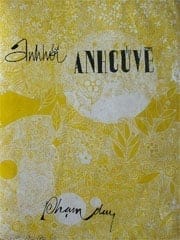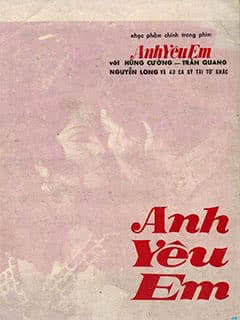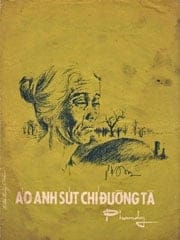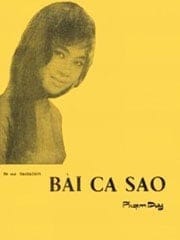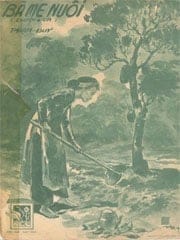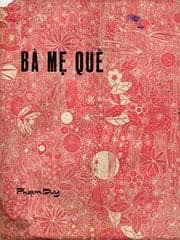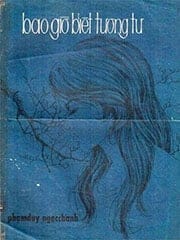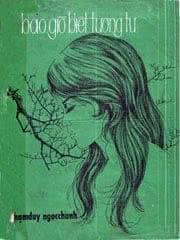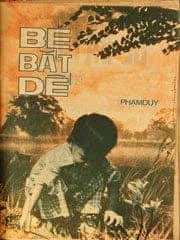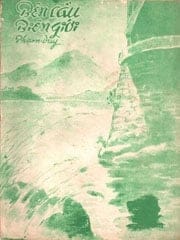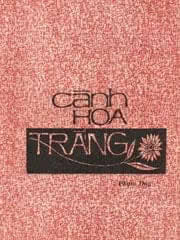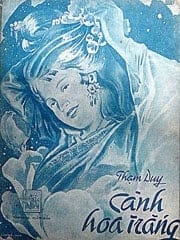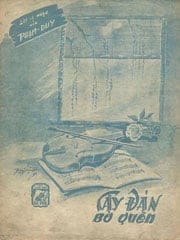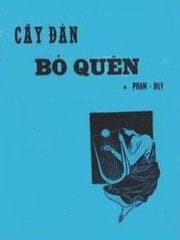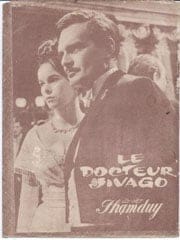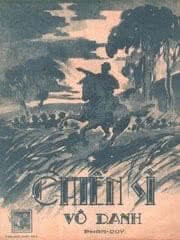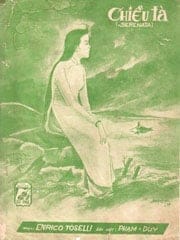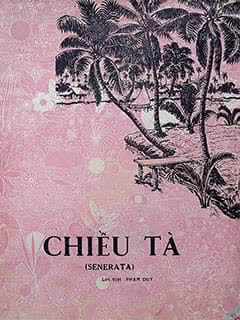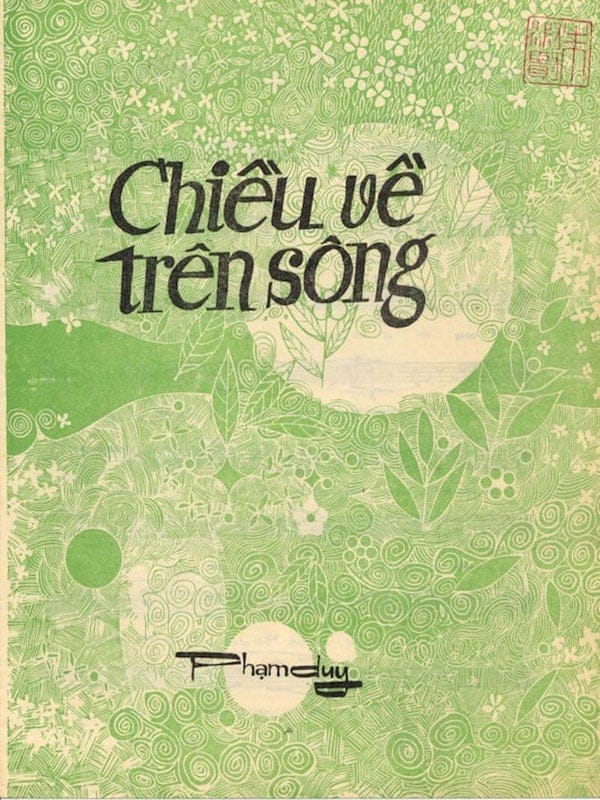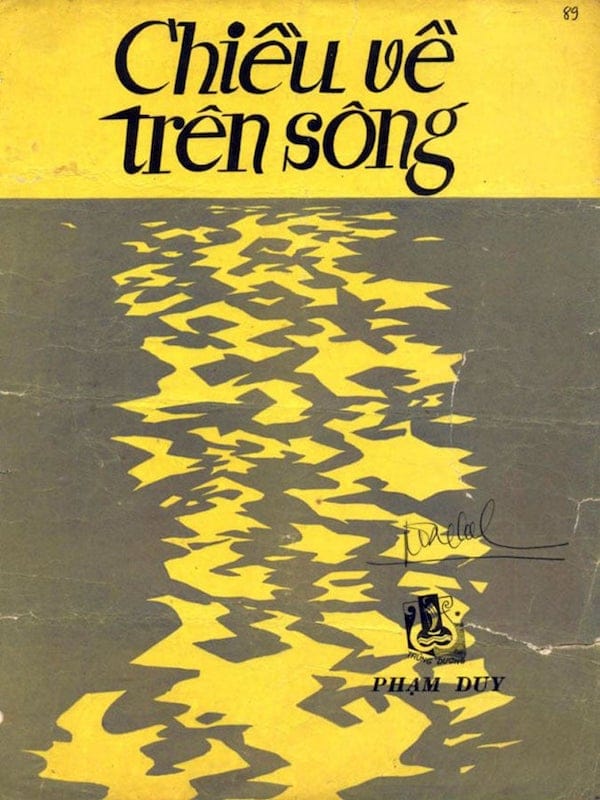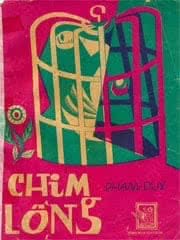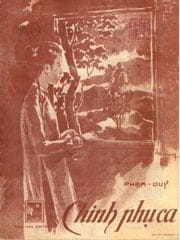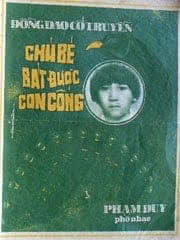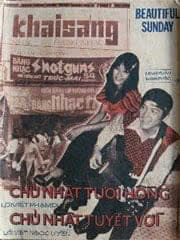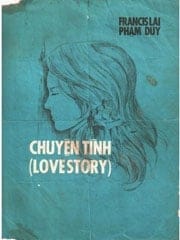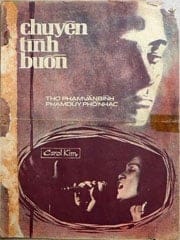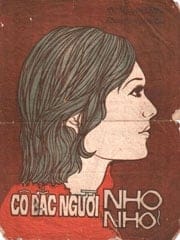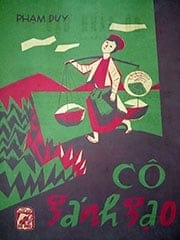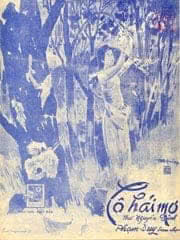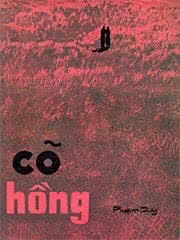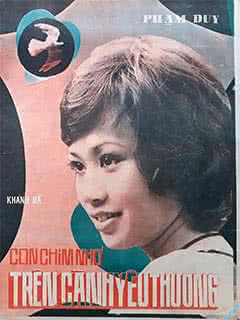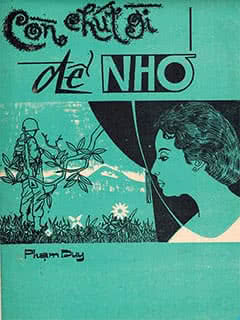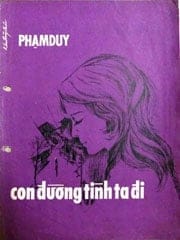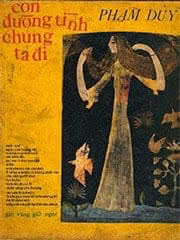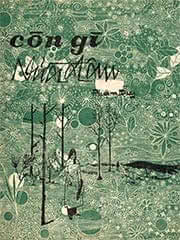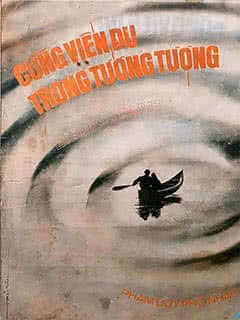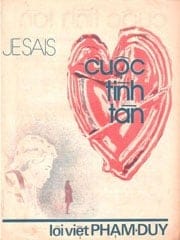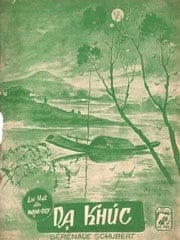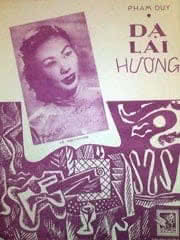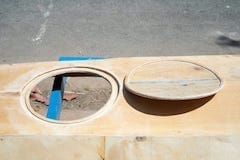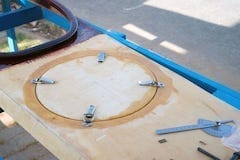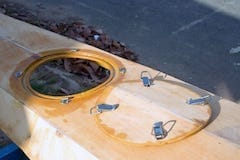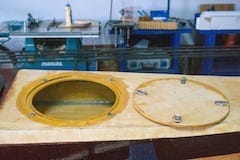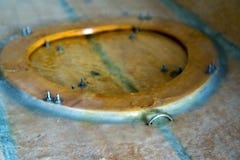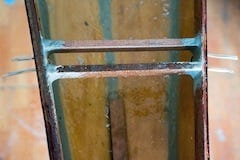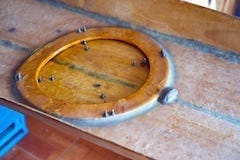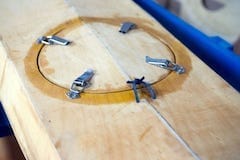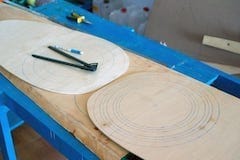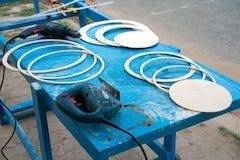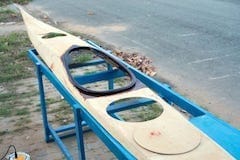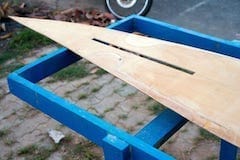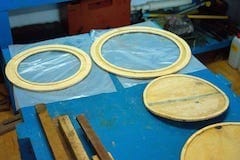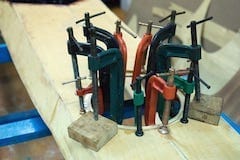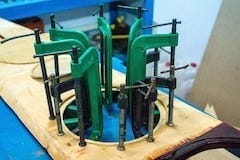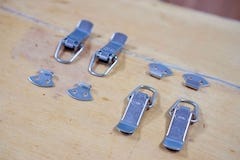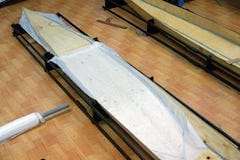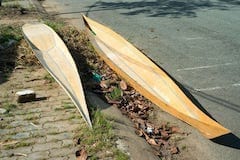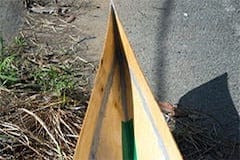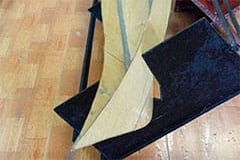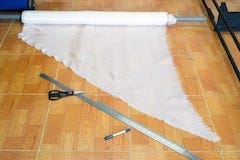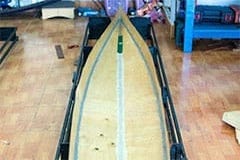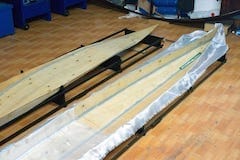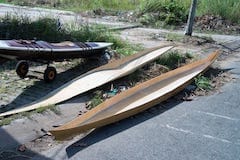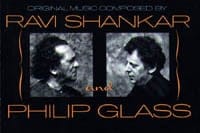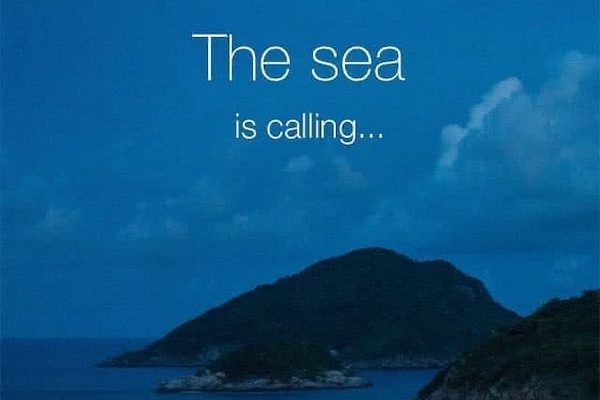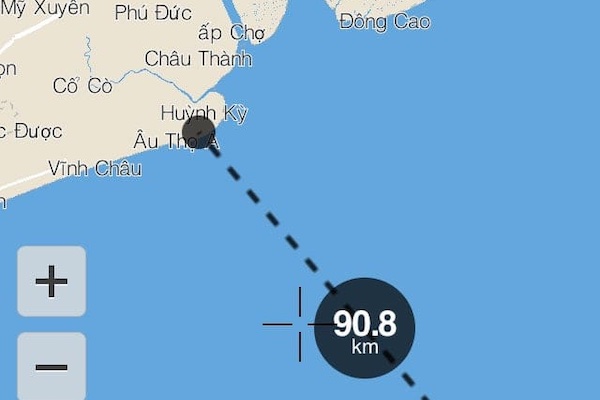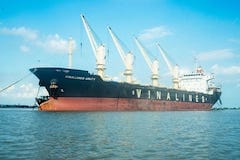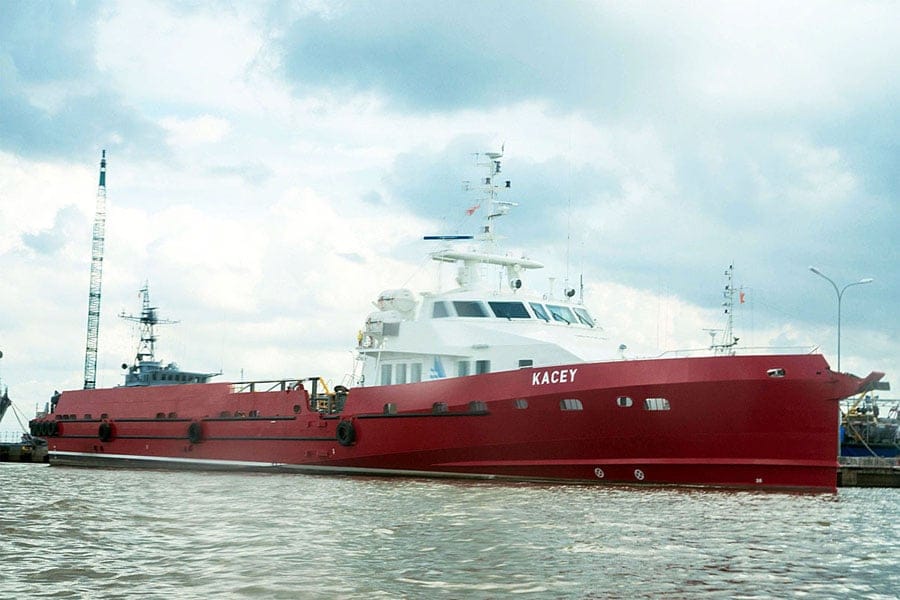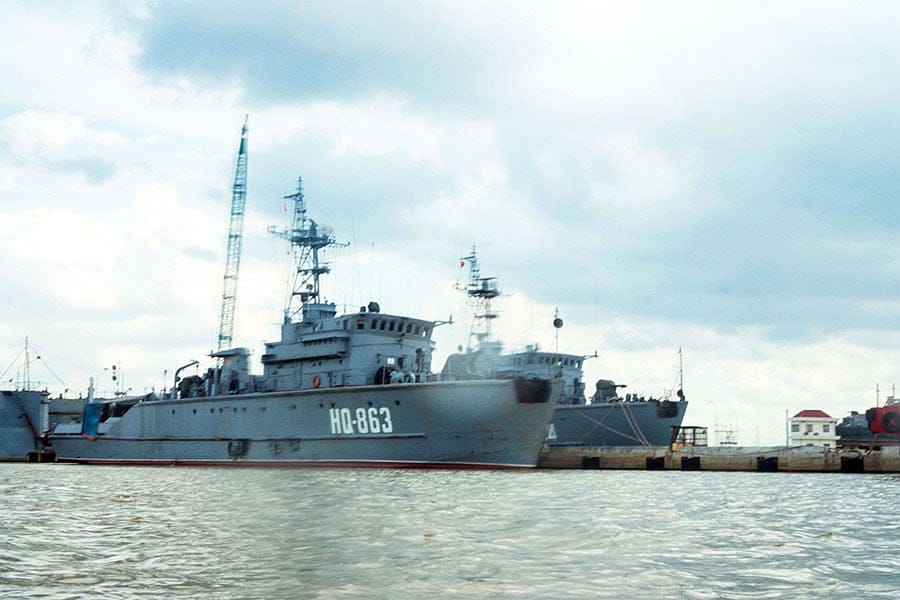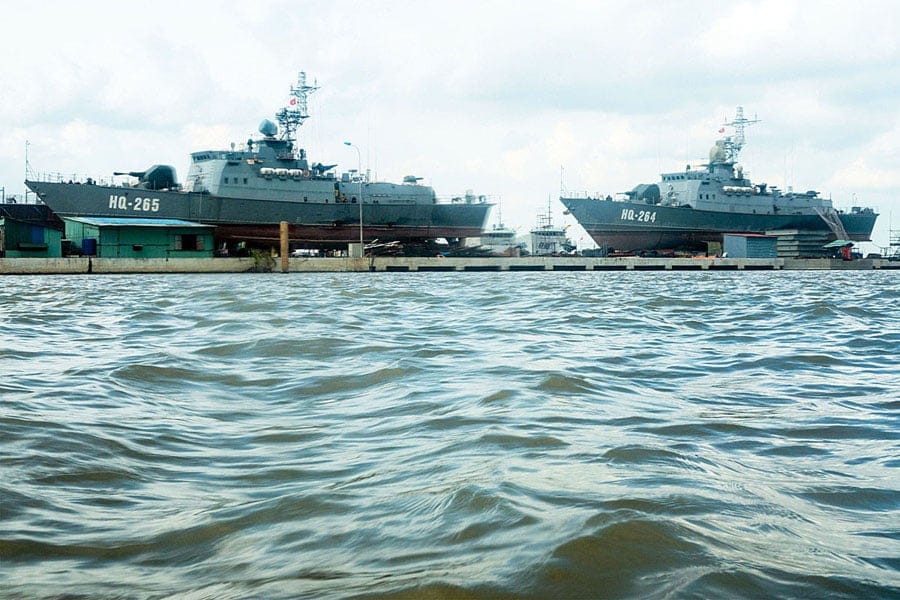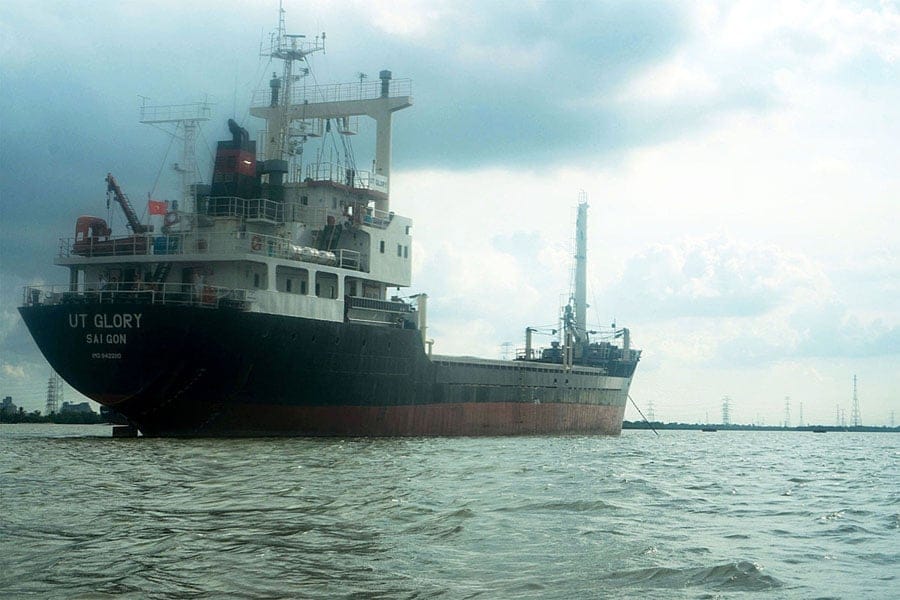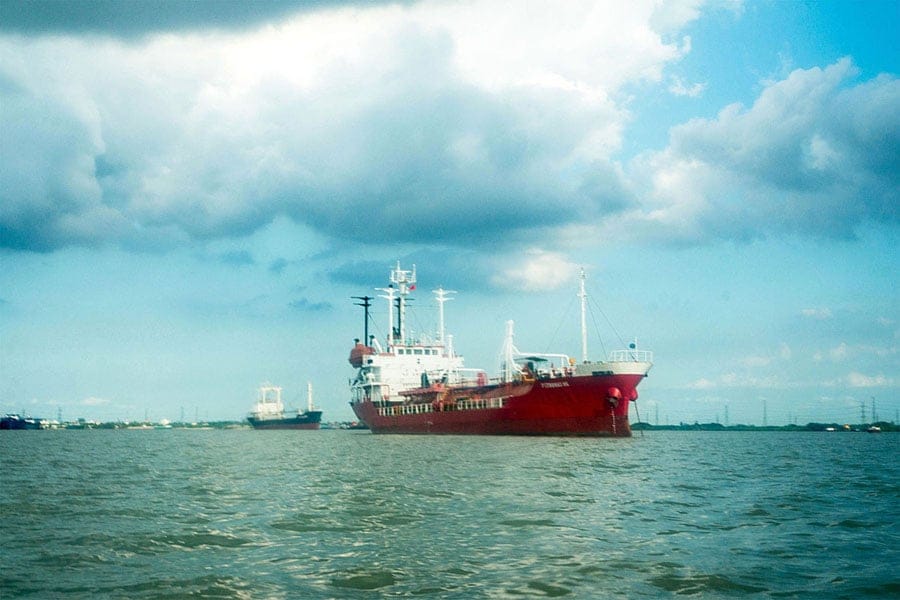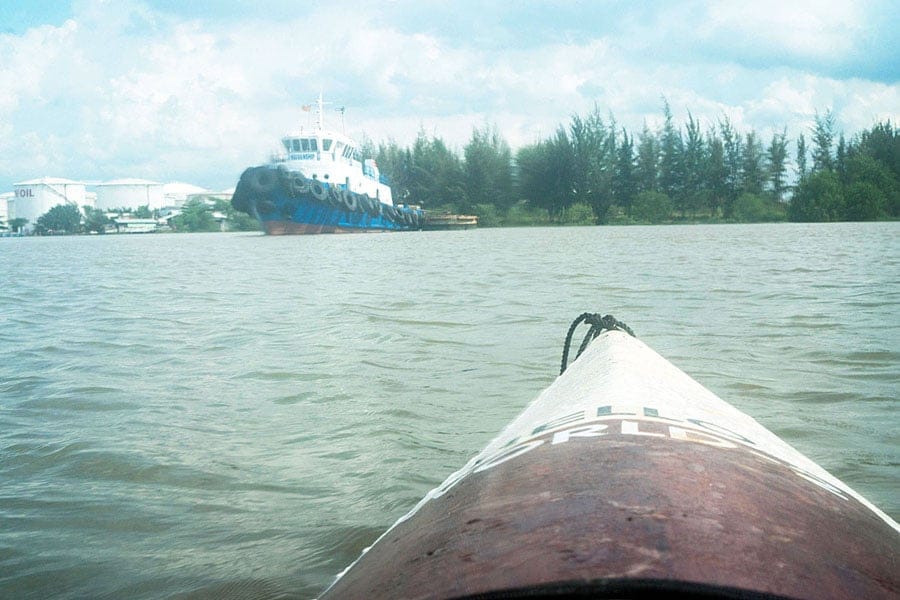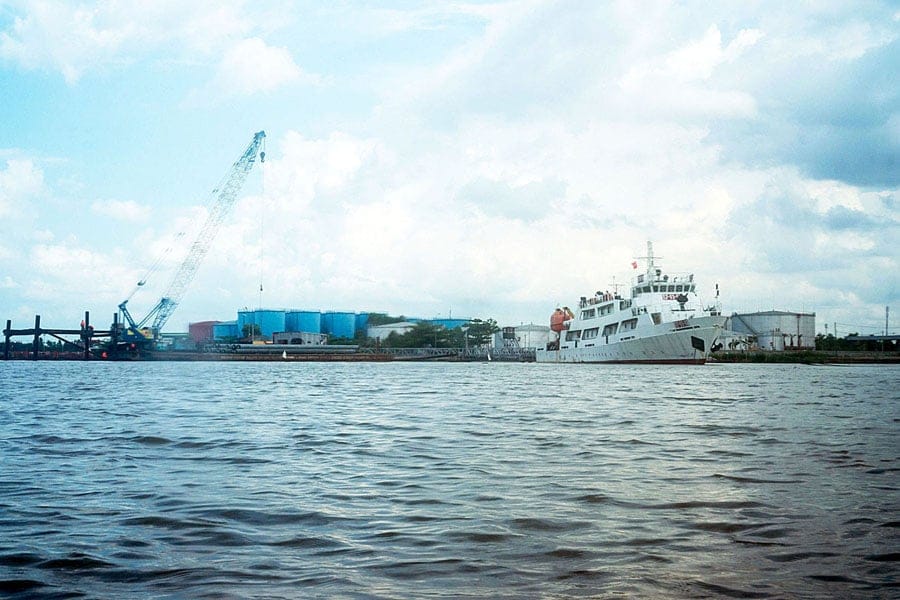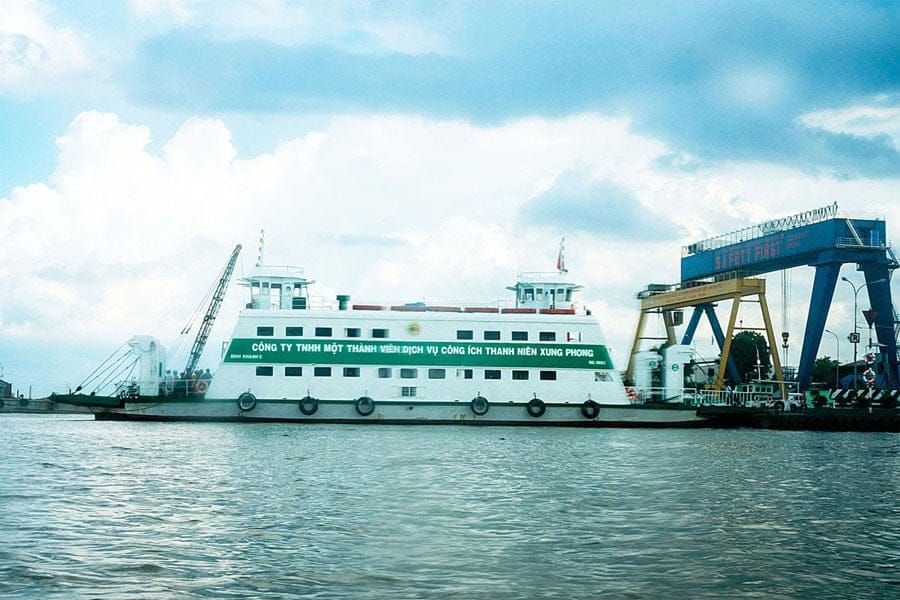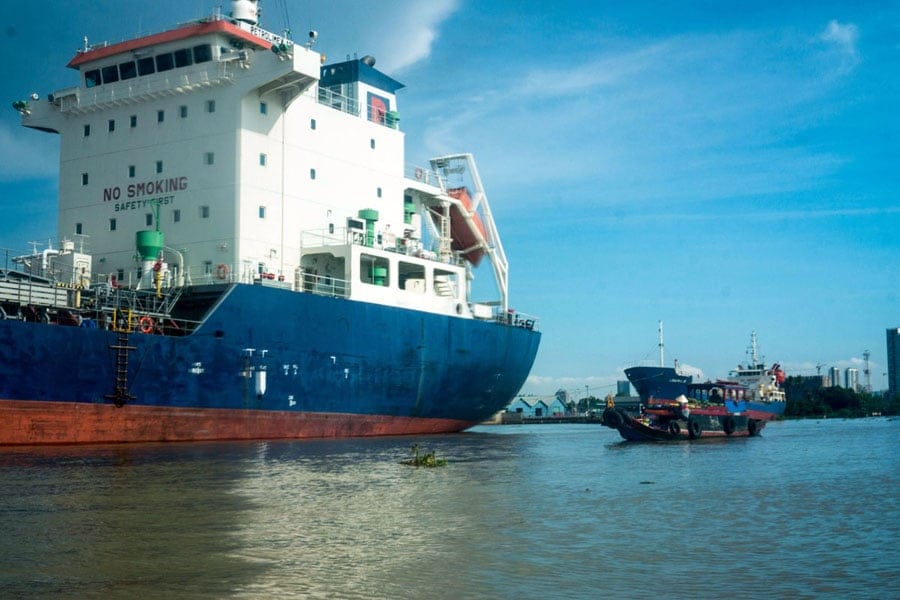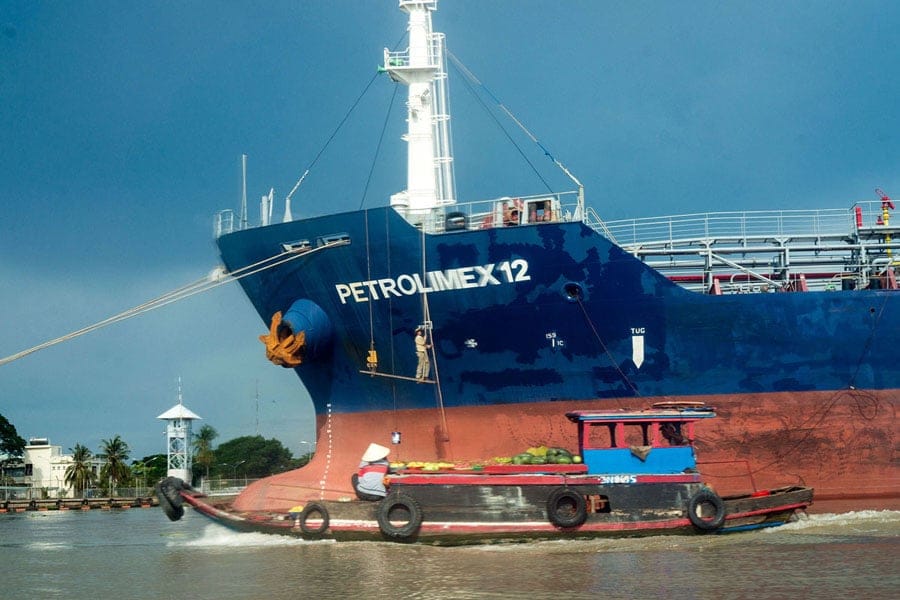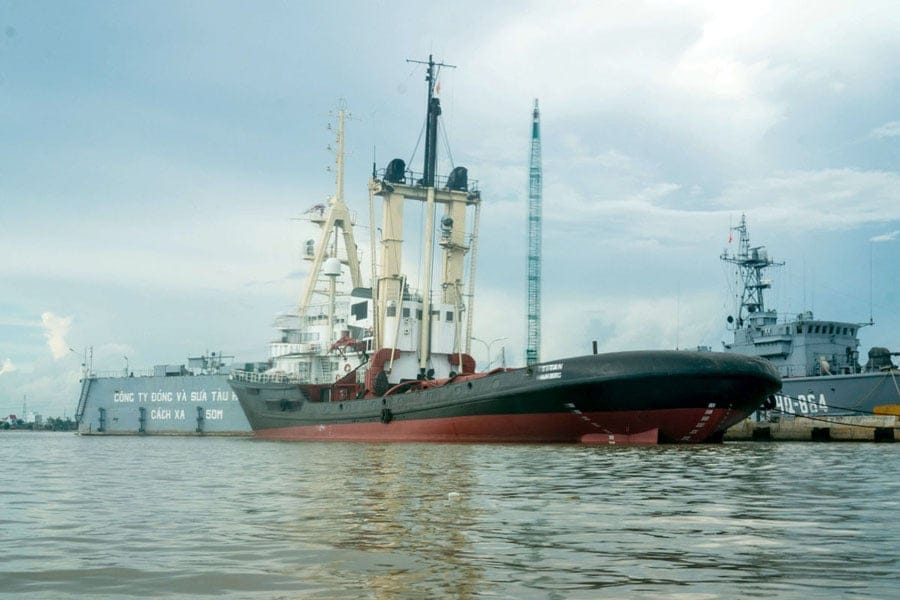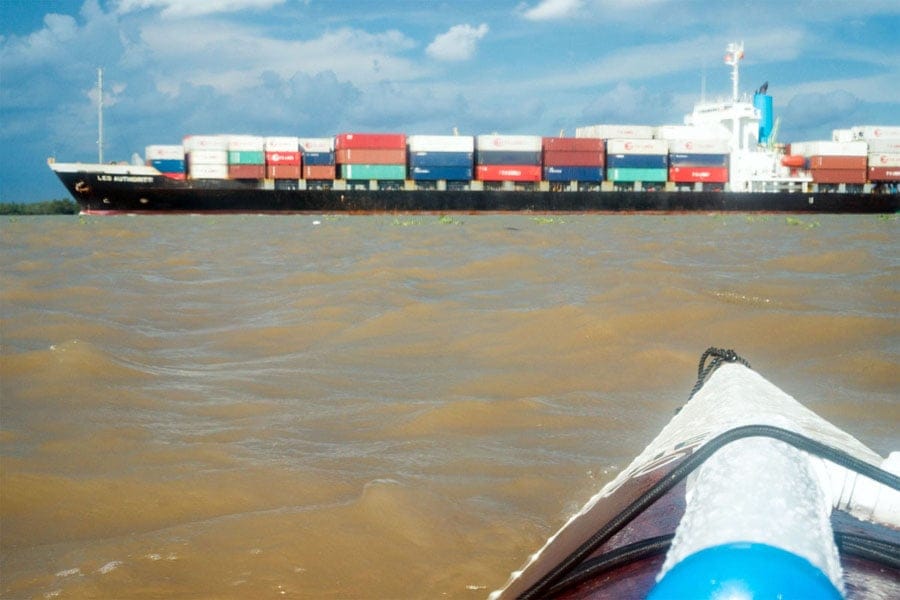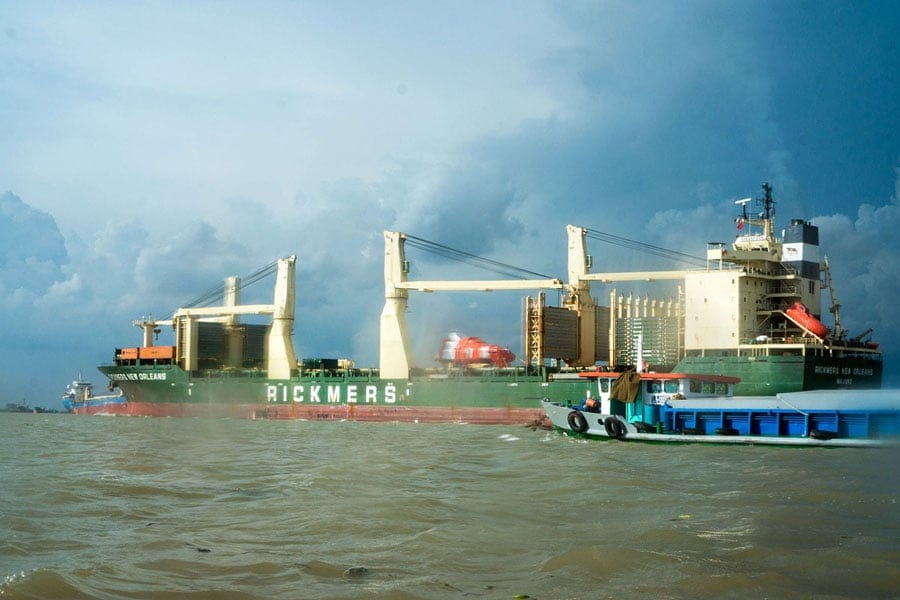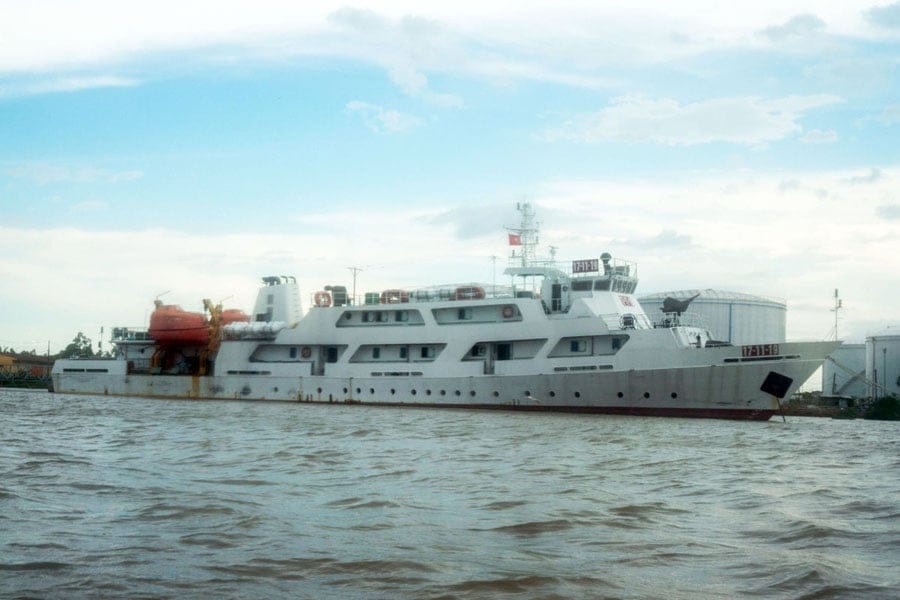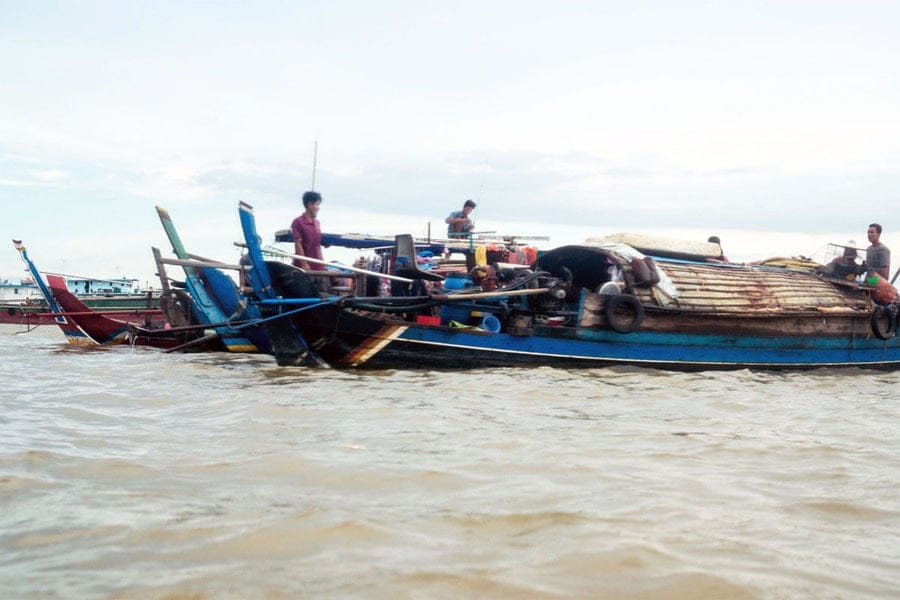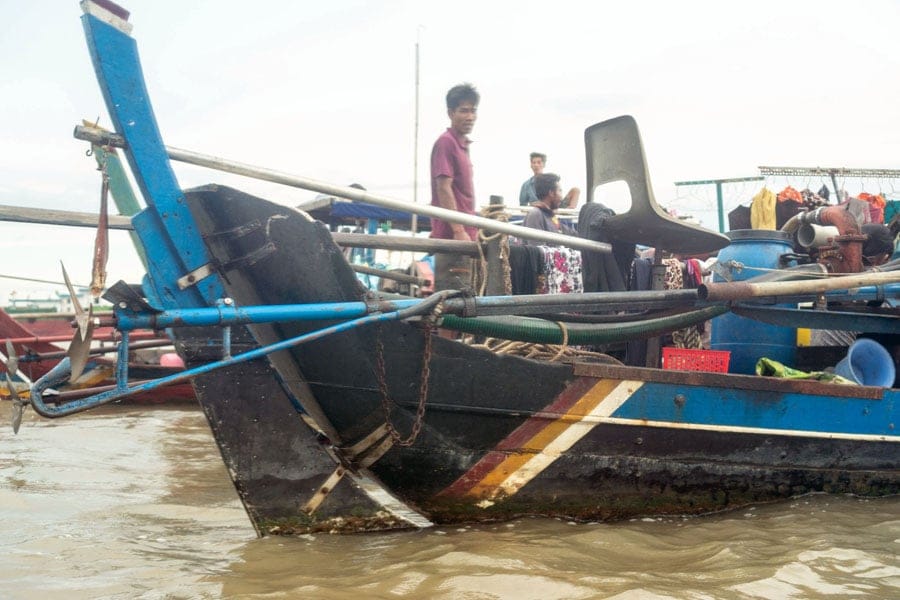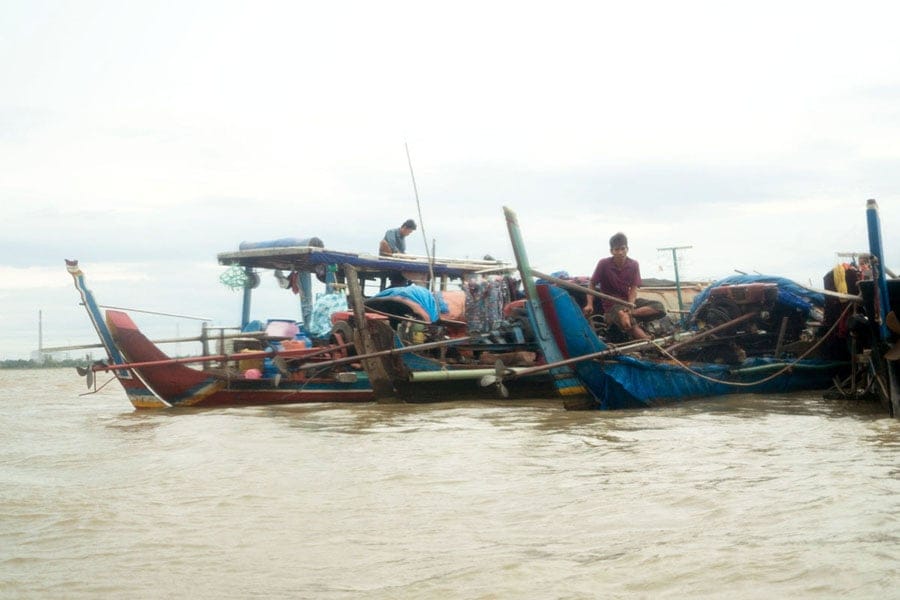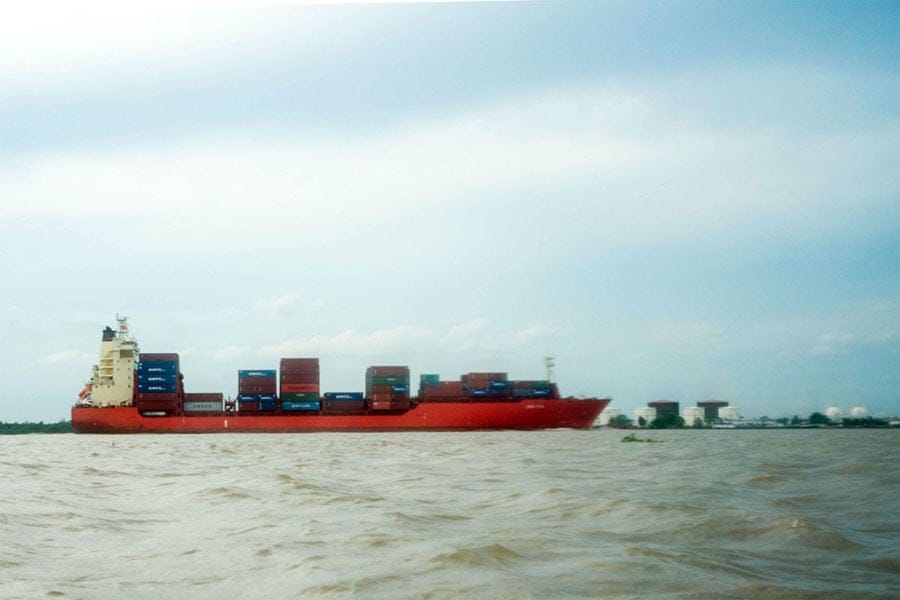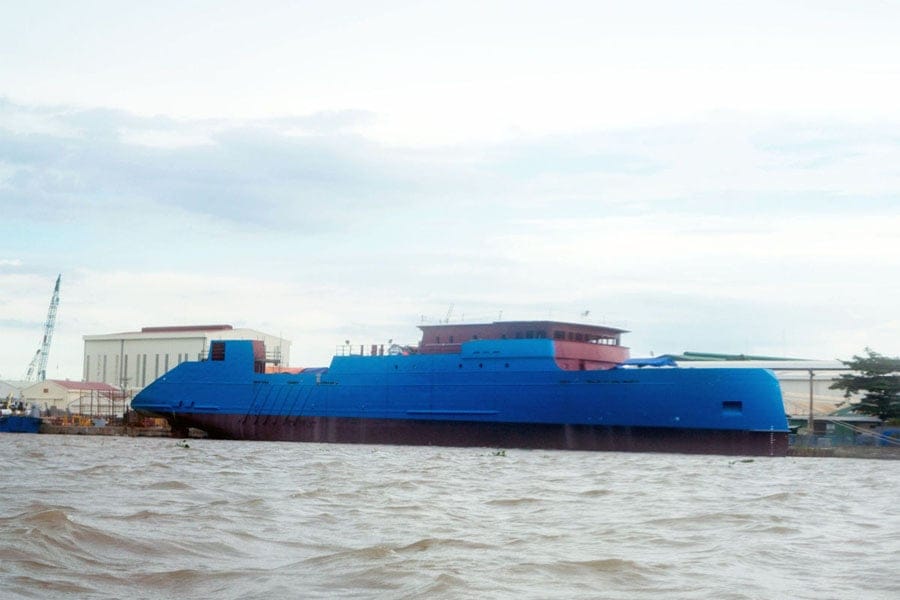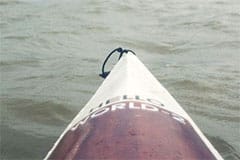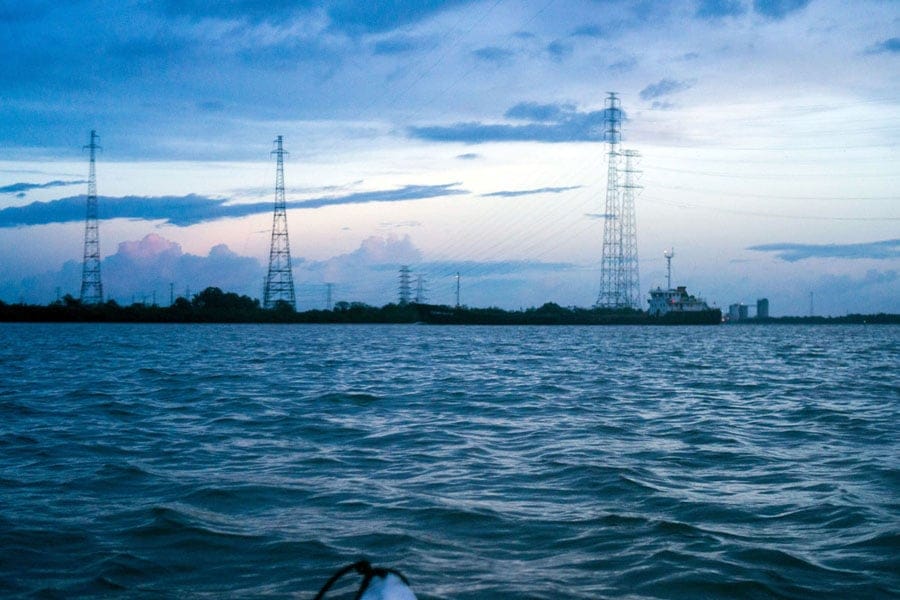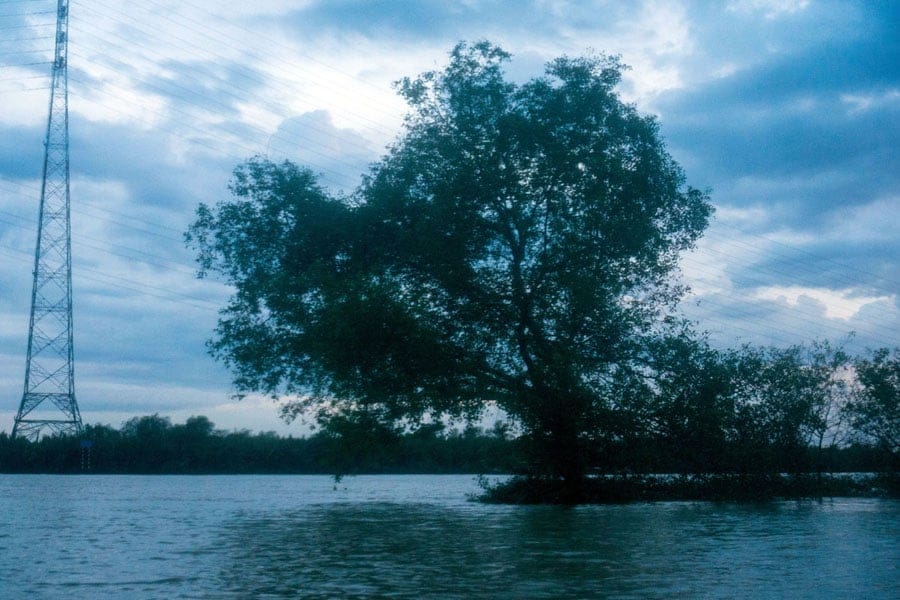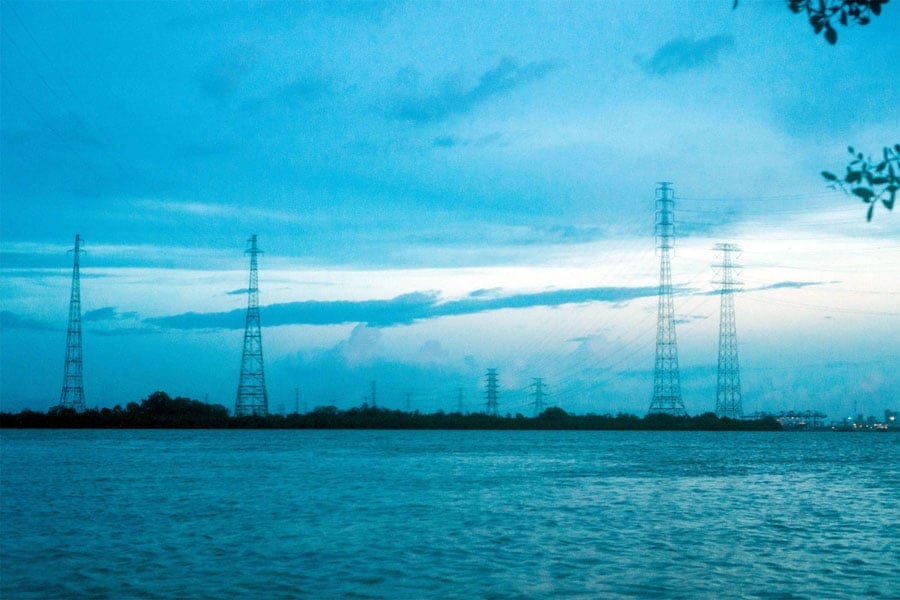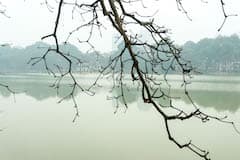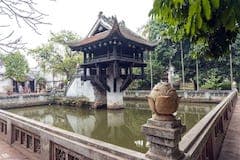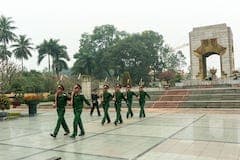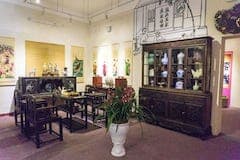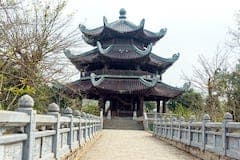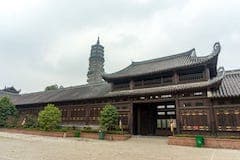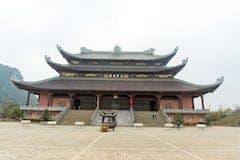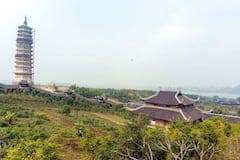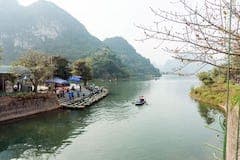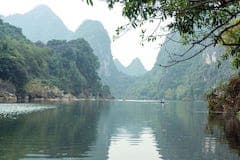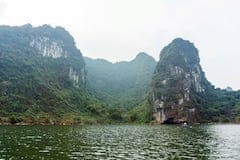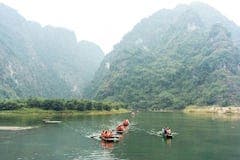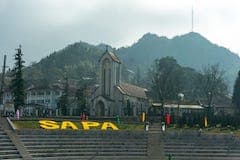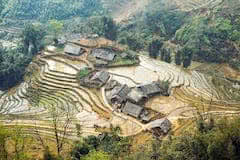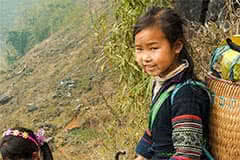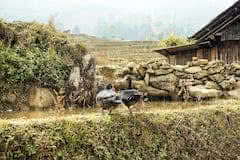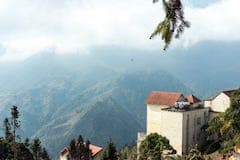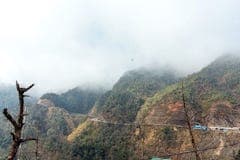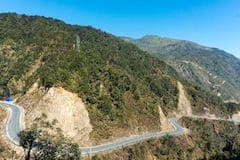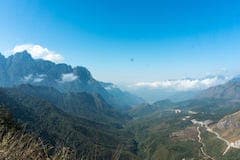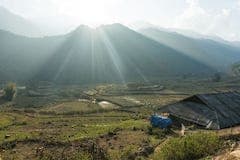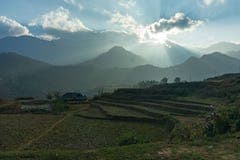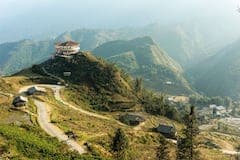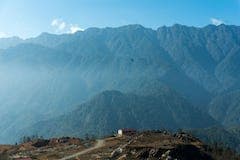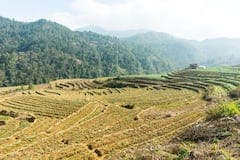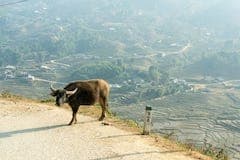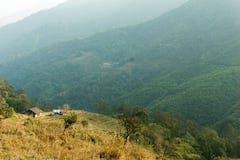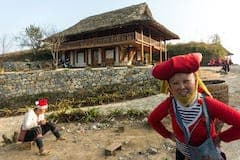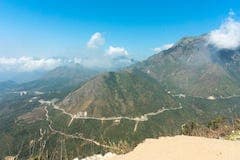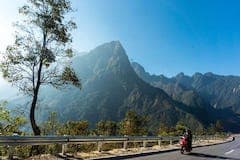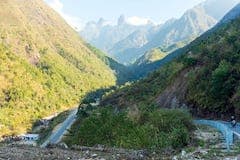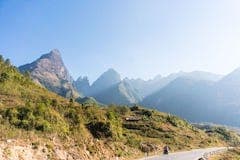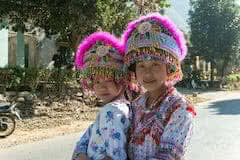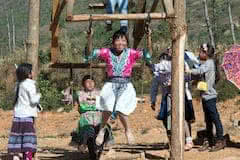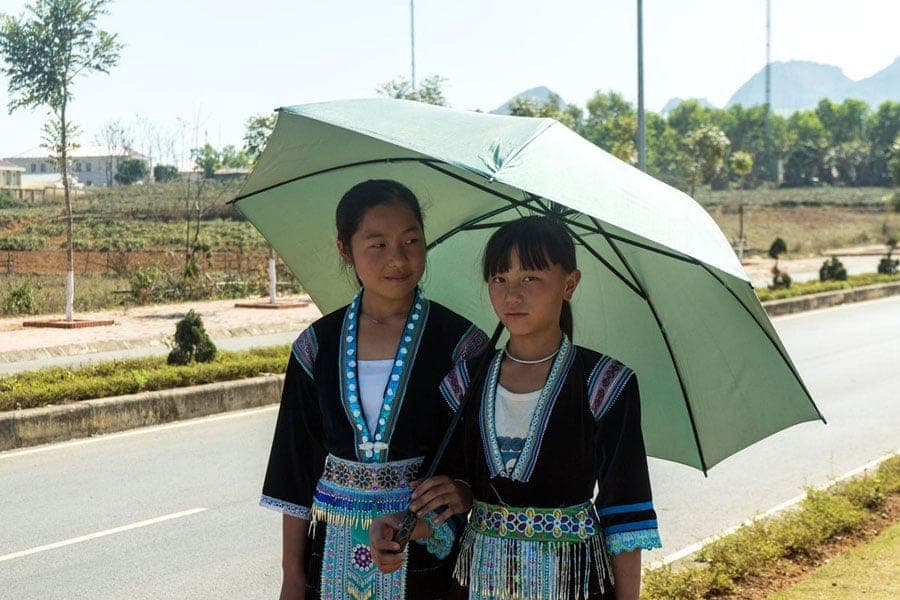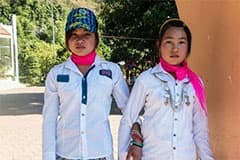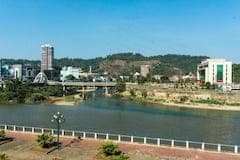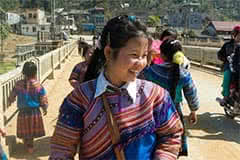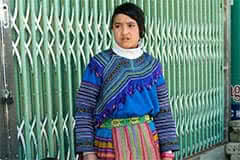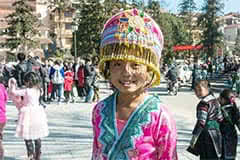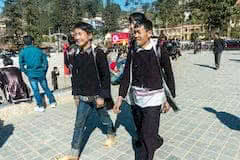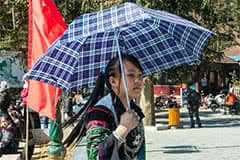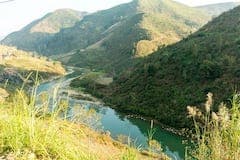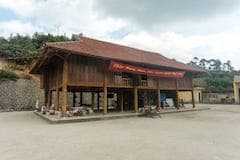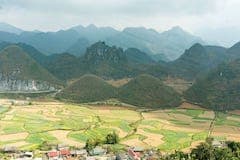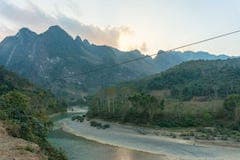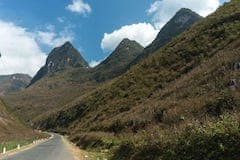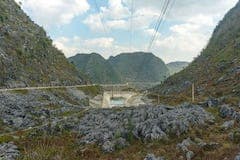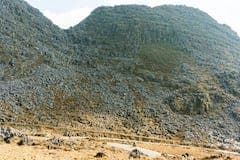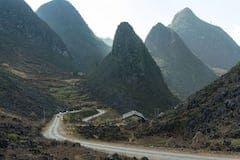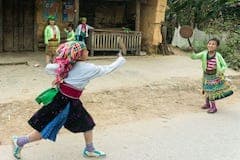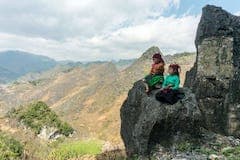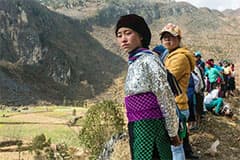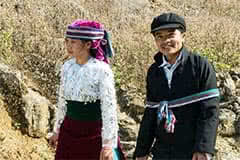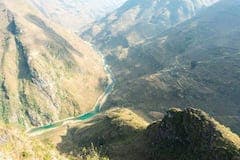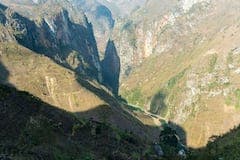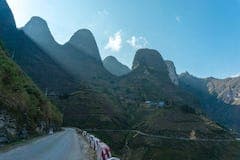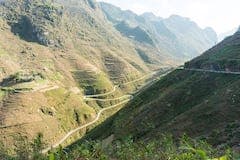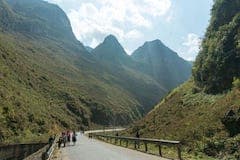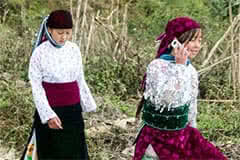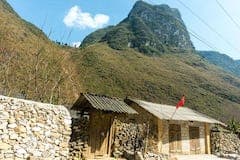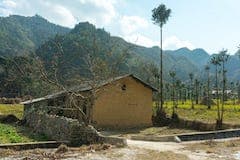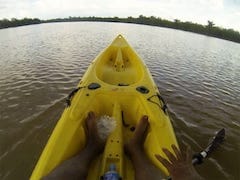 ập hợp khoảng 150 bìa nhạc Phạm Duy… đây chỉ là một phần nhỏ trong số cả ngàn tác phẩm âm nhạc của ông, còn nhiều ca khúc khác không có bìa nhạc tương ứng, hoặc là thời gian đã quá xa xăm để có thể tìm lại được. Một số là những minh hoạ, giới thiệu đơn giản, một số có vẻ “ngây ngô” theo cái nhìn thời bây giờ, nhưng một số khác là những tiểu phẩm hội hoạ thực sự độc đáo do các hoạ sĩ tên tuổi thực hiện. Một thời, những tác phẩm âm nhạc được phổ biến theo cách như thế, những bản in lụa, in typo công phu, xinh xắn…
ập hợp khoảng 150 bìa nhạc Phạm Duy… đây chỉ là một phần nhỏ trong số cả ngàn tác phẩm âm nhạc của ông, còn nhiều ca khúc khác không có bìa nhạc tương ứng, hoặc là thời gian đã quá xa xăm để có thể tìm lại được. Một số là những minh hoạ, giới thiệu đơn giản, một số có vẻ “ngây ngô” theo cái nhìn thời bây giờ, nhưng một số khác là những tiểu phẩm hội hoạ thực sự độc đáo do các hoạ sĩ tên tuổi thực hiện. Một thời, những tác phẩm âm nhạc được phổ biến theo cách như thế, những bản in lụa, in typo công phu, xinh xắn…
Category: music
hello world – 3, part 15
 ontinue to work on the hatches… In my thinking, using the hasp locks is a nice way to hold down the hatches: secured and easy lock / unlock, tight fit, no hassle of lines or bungee cords. But still I have a little concern that those small metal parts could affect the operation of the magnetic compass, which would be mounted nearby. But most good modern compass nowadays should probably resist well to those small ferromagnetic interferences.
ontinue to work on the hatches… In my thinking, using the hasp locks is a nice way to hold down the hatches: secured and easy lock / unlock, tight fit, no hassle of lines or bungee cords. But still I have a little concern that those small metal parts could affect the operation of the magnetic compass, which would be mounted nearby. But most good modern compass nowadays should probably resist well to those small ferromagnetic interferences.
Initially, I intended to install three locks per hatch, but after some considerations, I installed four. With three locks, only one failure could easily let the hatch open, while with four, it would take at least two failed locks to make the hatch unsecured. It takes me a few hours to check fitting the hatches’ grooves, then using 3mm – diameter bolts to nail down all the parts (all is made of stainless steel). The result is quite pleasing: all hatches is tightly fitted and well secured.
Next, I make some slots to install the rigging. These are intended for some “heavy – duty” lashing used for the sail. The idea is simple, but it took me some times to figure out how it works: drilling two small holes near each other, then pull a short piece of plastic tube through those holes, then fill the inside with epoxy putty (the tube is waxed to prevent it sticking to the putty). When the epoxy cures, pull the tube out, that would leave behind a “tunnel” to push your lashing line through.
I make only four “anchor points” like this, as it require some “strong holdings” to rig the mast and sail. The other deck riggings, I would just use some screws, bolts and bungee cords. I would try to keep the deck rigging to minimum, no perimeter lines, as I don’t feel very comfortable with a cluttered deck with too much lines and cords and other hardwares, the sail plan would add a bunch of them in addition later on. Also, I don’t really want to punch too many holes through the hull anyhow.
hello world – 3, part 14
 roceed on making the aft and forward hatches. I’ve changed my mind to make those hatches as simple as possible: all will be flush – deck, rounded hatches hold down by some hasp locks. (The plan proposes making a twist – lock one for the aft hatch, but that would take considerable effort to get done right). Also, I’ve decided to move the forward hatch further aft, to get the deck space to install some sailing hardwares (compass, blocks, cleats…) later on.
roceed on making the aft and forward hatches. I’ve changed my mind to make those hatches as simple as possible: all will be flush – deck, rounded hatches hold down by some hasp locks. (The plan proposes making a twist – lock one for the aft hatch, but that would take considerable effort to get done right). Also, I’ve decided to move the forward hatch further aft, to get the deck space to install some sailing hardwares (compass, blocks, cleats…) later on.
I’ve cut some plywood rings: one spacer ring, one lip ring, and two groove rings (to prevent water leaking in) for each hatch. The forward hatch is quite small indeed, 22 cm in diameter, and 34 cm for the aft hatch. Actually, I prefer shapes that can be geometrically defined, so abandon the egg – shape forward hatch as proposed by the plan. Next would be the simple task of glueing them together. Also, I’ve cut a slot on the aft deck section to get the skeg box through.
After glueing the hatch lips to the hull, I put small fillet lines at the seams before glassing the internal side of the lips. Then I apply several layers of penetrating epoxy (epoxy thinned with xylene) onto the hatches’ rings, grooves… before applying another layer of un – thinned epoxy, then would come the painting in a later phase. All these parts could easily wear out after some times of use, so they need some special cares. Then come the hasp locks, four locks per hatch.
I was thinking over about the use of hasp locks. Usually, on sea kayaks, they avoid metal part, cause it could get corroded by salt water. But good metal part plus proper maintenance can prolong the service life to years, before it can be replaced. The only problem with these locks is that putting them on deck could cause you some small injuries in self – rescue actions, e.g: if you’re thrown out of the boat in heavy sea, the locks could scratch your skin when trying to get in again.
hello world – 3, part 8
 oticed that the hull’s plywood scarf joints happen to be closed to the seat and (sail) mast base position, I decided to reinforce those places with a narrow (20 cm) stripe of glass. Also noticed that a small paint roller helps distributing the epoxy more even and quicker compared to a brush, though it does absorb (and hence waste) a considerable amount of epoxy. Saigon this season is so hot, all glassing need to be done at night, precisely and quickly.
oticed that the hull’s plywood scarf joints happen to be closed to the seat and (sail) mast base position, I decided to reinforce those places with a narrow (20 cm) stripe of glass. Also noticed that a small paint roller helps distributing the epoxy more even and quicker compared to a brush, though it does absorb (and hence waste) a considerable amount of epoxy. Saigon this season is so hot, all glassing need to be done at night, precisely and quickly.
Next is glassing the hull’s seams, and internal glassing for all the hull and deck (I don’t glass the deck’s seams, feeling that one layer of glass is enough). I use epoxy with the B5 hardener for the seams, it’s slow curing and somewhat elastic nature is more suitable for all glueing, joining, better bonding to some tropical hard wood (compared to the TETA). And I use TETA for the overall glassing, its hardness helps creating a rigid external shell, and it is also cheaper to be used in greater quantity.
I can’t find fiberglass tape suitable for boat work of any kind here, so decided to use bias – cut fiberglass (cut along the diagonal line) instead. At this point, I tried to bend the side bilges a bit, it’s really really tough, with the internal glassing only (the external is not yet on). Feeling pleased with my epoxy and glassing work, and by my estimation, I’ve put about 1.8 ~ 1.9 kg of epoxy on (for both the deck and hull), I’m now counting the epoxy to help reducing the final boat weight.
Next is installing the gunwales (the inwales), just learnt that these are British English, for American English, it’s called the ‘sheer clamp’. The plan suggests joining the hull and deck using fiberglass tape, but since I have no such, and since I have less confident in that method, I resort to the known technique of using the inwales instead. This gonna be a bit tricky, since the inwales need to be bevelled differently along their length, the good side is that there would be little difficulty in bending them.
passages
 artly presented very long before, some compositions that’s highly inspirational to me, the Ravi Shankar and Philip Glass album: Passages. I particularly like the Meetings along the edge and Ragas in minor scale pieces. It’s a real pleasure to enjoy the profound sounds of the Indian sitar, sarod, tabla… in conjunction with the Western instruments violin, viola, cello… For so long, my mind has been too dull and monotonous… for such a delicate and elegant music.
artly presented very long before, some compositions that’s highly inspirational to me, the Ravi Shankar and Philip Glass album: Passages. I particularly like the Meetings along the edge and Ragas in minor scale pieces. It’s a real pleasure to enjoy the profound sounds of the Indian sitar, sarod, tabla… in conjunction with the Western instruments violin, viola, cello… For so long, my mind has been too dull and monotonous… for such a delicate and elegant music.
the call
We’re all following a strange melody.
We’re all summoned by a tune…
And we dance beneath the moon!
 eally busy lately, can’t even find some little time slots for going paddling! For many time I’ve been hearing it, the tune sounds like Enya’s Orinoco Flow (a.k.a: Sail away), and I know, it’s calling, it’s calling me. I just have to “Slide to answer”, but pressing “Remind me” is my only option right now! 😢 Surely won’t miss your next call again!
eally busy lately, can’t even find some little time slots for going paddling! For many time I’ve been hearing it, the tune sounds like Enya’s Orinoco Flow (a.k.a: Sail away), and I know, it’s calling, it’s calling me. I just have to “Slide to answer”, but pressing “Remind me” is my only option right now! 😢 Surely won’t miss your next call again!
NSTarget
Once we were standing still in time,
Chasing the fantasies that filled our minds.
…Now looking back at all we’ve planned,
We let so many dreams just slip through our hands.
 his has been added into my intermediate – term TODO list, a promise to return to Côn Đảo made earlier last year, in a different way, not by way of air of course. Don’t really know if I could make this, cause it’s really a tough (and adventurous) target to conquer, and there’re lots of things I also wanted and planned to do, too many of them indeed, but let just set the milestone there!
his has been added into my intermediate – term TODO list, a promise to return to Côn Đảo made earlier last year, in a different way, not by way of air of course. Don’t really know if I could make this, cause it’s really a tough (and adventurous) target to conquer, and there’re lots of things I also wanted and planned to do, too many of them indeed, but let just set the milestone there!
on saigon river
Chiều buông, trên dòng sông Cửu Long,
như một cơn ước mong, ơi chiều!
Về đâu, ơi hàng cây gỗ rong,
nghiêng mình trên sóng sông, yêu kiều…
A watery Saigon p1
A watery Saigon p2
A watery Saigon p3
(Many pictures taken are not very sharp, since my new fixed lens has difficulty making proper focuses through the opaque water – proof plastic cover)
 or the last several months, I rarely take a camera with me while kayaking. Partly cause I don’t want to bring delicate electronics to water, partly cause I want to concentrate just on paddling. But that’s why I’ve missed many noteworthy things on the way, many times I wished I’d had a camera at the right moment.
or the last several months, I rarely take a camera with me while kayaking. Partly cause I don’t want to bring delicate electronics to water, partly cause I want to concentrate just on paddling. But that’s why I’ve missed many noteworthy things on the way, many times I wished I’d had a camera at the right moment.
The other day, I was paddling in the late afternoon when a large flock of white storks approached my boat in the opposite direction. The V – shape formation obviously was utilizing the “surface effect”, flying closed to water. Just 10m away, the birds raise the altitude, make lots of noises, and pass above my head, a spectacular scene!
Another day, I was taking a short rest under a big mangrove palm tree, watching a beautiful butterfly in a brush nearby. All of a sudden, a big catfish jumps from beneath the calm water, catches the butterfly in its mouth, then disappears as quickly as it comes. I wished I could have taken a picture of that interesting moment!
A colorful world of boats of all kinds and sizes on the rivers, ranging from 0.5 ton (my kayak 😀) to 50,000 ton (this is about the upper limit for boats to traverse safely on Saigon river). The 3rd and 4th images, the pair of Sonya – class minesweepers: HQ – 863, HQ – 864 and two Svetlyak – class gunboats: HQ – 264, HQ – 265 at Hải Minh naval shipyard.
Most people I met on rivers is friendly. The local fishermen are usually timid (except when they’re drunk), the vendors are talkative and glib, only the professional sailors warmly share with me their thought on boats and boating… I receive lots of questions on my boats, and some even propose to sell / build for them another Hello World – 2 😀.
A week ago, I passed by a group of wooden boats, whose outlooks are very different to boats of this area. The long, narrow hull, the crescent rudder, colors and decorations… those could be boats of Cambodian influences, I’d thought, very original design, little modern modifications! The next day, I come back with a camera, and they’ve gone! 😢
Today, I met that group of strange boats again, luckily. It turned out that they’re of Cham ethnic group, not Khmer as I initially assumed, coming from Châu Đốc (An Giang province). It was so good that a really friendly young guy showed me around the group of 4 boats, 4 families living floating lives. They’re poor, but simple and sincere!
The young men then showed me that of the four boats, there’s a different one, it’s an “antique” dugout boat, made mainly from a single huge log of wood. The other 3 are modern builds, wooden planks on frame, although externally they look exactly the same. He said, the dugout boat has been handed down from generation to generation…
…And he doesn’t even know how old the boat is, but estimated that it should be older than 150 years. I examined the boat’s very original design, such a dugout is surely a very rare specimen that can hardly be found today. I then continue my paddling path, many entangled thinking in my head, twilight is gently casting on the immense river…
bắc hành – 2014
Người về miền xuôi, đem theo tình người miền núi,
Nhà sàn lả lơi, đứng bên đường hoang vắng soi.
Đưa chân anh qua đồi, cơm lam đem theo người,
Lên cao anh ôm trời, để dòng suối lẻ loi…
 hi chép linh tinh trên đường thiên lý ra đất Bắc…
hi chép linh tinh trên đường thiên lý ra đất Bắc… Ai về Bắc, ta đi với; Thăm lại non sông giống Lạc Hồng…
Đôi khi phải hơi điên điên một chút, phải có cái nhìn bóp méo thực tế (reality distortion field) một chút, cười khinh khỉnh vào cái thực trạng xã hội bullshit bây giờ, để tâm quan sát, tìm kiếm… thì mới nhìn ra những điều tốt đẹp xưa cũ, mới nhận ra đâu là cái chất Việt thuần hậu!
HÀ NỘI
Cái logo di sản văn hoá phi vật thể của Unesco có thể được thấy trang hoàng khắp mọi nơi ở Hà Nội, cái hình tròn có lỗ vuông ở giữa, nhìn giống đồng tiền xu cổ, hình như phản ánh đúng thực tế Hà Nội bây giờ: vật giá ngày càng đắt và con người ngày càng rẻ!
BÁI ĐÍNH
Quy mô rất hoành tráng (dù điều đó chẳng có gì khó với kỹ thuật xây dựng hiện đại), nhưng đường lối kiến trúc đúng chất Việt, từ lầu chuông gác trống cho đến đường nét các mái, kèo, xà, cột… không tạp nham, lai căn, vớ vẩn kiểu Đại Nam, Suối Tiên…
TRÀNG AN
Sơn thuỷ hữu tình, thật là nơi quyến rũ lòng người! Nước suối trong vắt, cá chép vàng choé lượn lờ dưới đáy rêu, các loài thuỷ cầm tự nhiên: cốc, vịt… bơi lội tự do! Sẽ có một ngày ta mang chiếc xuồng ra đây chèo đi chơi bằng hết các ngõ ngách sông ngòi và hang động!
SAPA
Ở Hà Nội, người ta bắt chuyện với mình bằng tiếng Anh, còn ở đây, người ta nhận ra ngay người Việt. Xứ sở của lạnh giá và sương mù, phong cảnh thiên nhiên tuyệt đẹp! Con người ta sống giản đơn, và cũng học đòi những thói xấu hiện đại… theo cách đơn giản!
Vốn không sợ độ cao, nhưng thỉnh thoảng vẫn cảm thấy ngợp trước núi đồi trùng điệp nơi đây. Sapa mùa này, phải thật kiên nhẫn mới chụp được một khung hình đẹp, ánh mặt trời rạng rỡ chỉ hiện ra vào một vài thời khắc hiếm hoi trong ngày, khi màn sương mù lạnh giá tạm vơi bớt.
Đa số chúng ta (kể cả tôi) tới đây với mong muốn có được những khung hình đẹp, nhưng phải chăng đó là tất cả mục đích của hành trình? Suy rộng ra, cái câu hỏi: chúng ta tới đây để làm gì?
ấy, nếu ai đó còn có trong đầu một câu trả lời, tức là còn… chưa trả lời được vậy! 😀
Những cung đường Tây Bắc không dành cho người yếu tim, chỉ một giây lơ là mãi ngắm nhìn cảnh quang xinh đẹp là đã có thể lạc tay lái xuống vực. Khác với thời tiết 3°C mấy ngày đầu lên đây, những ngày sau ấm hơn và có nắng, hôm nào máy ảnh cũng hết sạch pin rồi mới trở về!
LAI CHÂU
Đèo Ô Quý Hồ, dài và hiểm trở, cắt ngang qua dãy Hoàng Liên Sơn, đổ từ độ cao 2000 m xuống 1000 m, đúng nghĩa là dốc thăm thẳm. Một bên là đỉnh Phan Xi Păng, bên kia là huyện Tam Đường, Lai Châu. Bên này đèo thời tiết ấm và khô, bên kia, phía Sapa, lạnh và ẩm.
Cả một vùng Tam Đường, Phong Thổ, Sìn Hồ, t.p Lai Châu tương đối ít núi cao, khí hậu ấm hơn, đất đai cũng rộng rãi hơn, con người cũng có phần cởi mở, thân thiện hơn. Hôm nay cũng là ngày Tết của họ. Tiếc là đã đến Sìn Hồ mà không đủ thời gian để đến Pú Đao…
BẮC HÀ
Đi chợ phiên Bắc Hà đầu năm (cách Sapa hơn 100km), tình cờ ghé qua đây, ngồi bên ngã ba sông Hồng và sông Nậm Thi, cầu Cốc Lếu, bên kia sông là Hà Khẩu, Trung Quốc. Và cũng thật tình cờ, mùa này tháng 2, chính xác là ngày 17 tháng 2, đúng 35 năm trước…
Phiên chợ đầu năm chưa đông, nhưng đã rực rỡ sắc mầu, riêng người Mông đã có 5 sắc khác nhau (đen, hoa, xanh…), người Dao có đến 23 nhóm nhỏ (đỏ, đen, xanh, trắng…), lại còn Thái, Tày, Nùng, Dự, Giáy… Học cách phân biệt các sắc mầu cơ bản cũng đã hết cả một buổi.
Khá nhiều địa danh vùng Đông Bắc, Tây Bắc Việt Nam có nguồn gốc từ tiếng Hoa, chính xác hơn là phát âm theo tiếng Quan Thoại giọng vùng Vân Nam, Trung Quốc. Ghi lại ở đây một số từ phổ biến:
tả, 大, đại, lớn: Tả Van; séo, 小, tiểu, nhỏ: Séo Tung Hồ; lao, 老, lão, già, cũ: Lao Chải; sìn, 新, tân, trẻ, mới: Sìn Hồ; phìn, 坪, bình, bằng: Tả Phìn; thàng, 塘, đường, ao, đê: Lùng Thàng; chải, 寨, trại, trang trại: Mù Cang Chải; cai, 街, nhai, ngã tư: Si Ma Cai; hồ, 河, hà, sông: Ô Quý Hồ; chéng, 江, giang, sông: Sín Chéng; cấu, 沟, câu, suối: Cán Cấu; san, 山, sơn, núi: Phìn San; sàng, 上, thượng, bên trên: Sàng Chải; sả, 下, hạ, bên dưới: Sả Séng; tung, 中, trung, ở giữa: Tung Chải; tra, 家, gia, nhà: Má Tra; sa, 沙, sa, cát: Sa Pa; sử, 石, thạch, đá: Mù Sử; lủ, 路, lộ, đường: Ma Lủ; ma, 馬, mã, ngựa: Ma Sa Phìn; lùng, 龍, long, rồng: Lùng Phìn; giàng, 羊, dương, con dê: Giàng Phìn; nàn, 南, nam – phía nam: Nàn Sán
HÀ GIANG
Đã Hà (河) lại còn Giang (江), nơi đây có rất nhiều suối, sông nhỏ chảy dọc theo thung lũng, bản làng cũng nương theo đó hình thành. Những ngôi nhà sàn của người Tày dài thậm thượt, ruộng nương xanh tốt. Hà Giang là vùng đất mà tôi thích nhất trong số những vùng đã đi qua!
Cao nguyên đá Đồng Văn, như bị lạc vào một ma trận, một sa mạc đá. Đá mọi nơi, nhìn hoa cả mắt, thi thoảng mới thấy chút xíu đất có thể trồng trọt. Gió lạnh căm căm thổi suốt ngày đêm, một cái lạnh khô khốc, các làng xã đều xây hồ treo lớn chứa nước phòng khi hạn hán.
Cuộc sống nơi đây cực kỳ khắc nghiệt, thế nhưng khác hẳn với cái nhếch nhác vùng Sapa, cư dân nơi đây có vẻ chỉnh tề, quy củ, kỷ luật, từ y phục cho đến sinh hoạt, sản xuất, vui chơi. Cảm thấy được nghị lực và sức sống vươn lên từ vùng sa mạc đá này!
Tp. Hà Giang, Quản Bạ, Yên Minh, Đồng Văn, Mèo Vạc, về lại Hà Giang, một vòng 300 km. Làm 2 vòng như thế theo 2 chiều ngược nhau để không bỏ sót điều gì… nhất là Mã Pí Lèng hùng vĩ nhất VN, con đèo mà nhiếp ảnh nghiệp dư như tôi không thể nào lột tả hết được.
Không quên ghé qua Sủng Là, nơi quay phim Chuyện của Pao. Bây giờ đúng vào mùa hoa tam giác mạch tim tím và hoa cải vàng ươm nở rộ trên cao nguyên hun hút gió. Đến để biết rằng một không gian như thế, những con người như thế… là điều hoàn toàn có thật!
Kể chuyện đi ăn cháo ấu tẩu tại Hà Giang. Ấu tàu là loại củ kịch độc, dùng làm thức ăn phải qua chế biến kỹ càng. Bữa đầu tiên, bát cháo có mỗi lát ấu tẩu bằng cái móng tay. Ngồi nói chuyện trên trời dưới đất với vợ chồng chủ quán, phong thái người Bắc xưa, chẳng có gì giống Bắc bây giờ, đã thấy là một chuyện lạ (nghĩ bụng là dạng Kinh già hoá Thổ, người xuôi lên mạn ngược lập nghiệp lâu đời, giữ nguyên giọng nói, phong cách xưa cũ). Đến bữa thứ hai, ngoài vài lát ấu tẩu, còn được thêm cái móng heo, thêm một chút lạ. Đến bữa thứ ba, thấy chuyện lạ nhất: được một tô toàn ấu tẩu, ăn đến phát ngán! 😀
barcarolle
Đến đây với tôi cánh buồm đỏ thắm xa vời…
 xperimenting with this new kind of first person shooting (on a second thought, almost any photo and video are first person’s view, aren’t they!?). Let press play, then press the fullscreen button to see the 720p, and turn on the speakers too. I don’t have much video shooting and editing experiences, but the up – coming capturings (to be uploaded in the next few weeks) would be better, I promise! 😀
xperimenting with this new kind of first person shooting (on a second thought, almost any photo and video are first person’s view, aren’t they!?). Let press play, then press the fullscreen button to see the 720p, and turn on the speakers too. I don’t have much video shooting and editing experiences, but the up – coming capturings (to be uploaded in the next few weeks) would be better, I promise! 😀
About the music: it’s a Vietnamese interpretation (sung by Mỹ Linh) of Tchaikovsky – The Seasons‘ 6th piece named: June – Barcarolle, usually known in Vietnamese under the titles: Tháng sáu (June) or Chèo thuyền (Barcarolle). Yet it’s a bit late (now is August already, not June anymore) but anyhow, wonderful are the enjoying moments! 😀
Solo:
Tandem:

